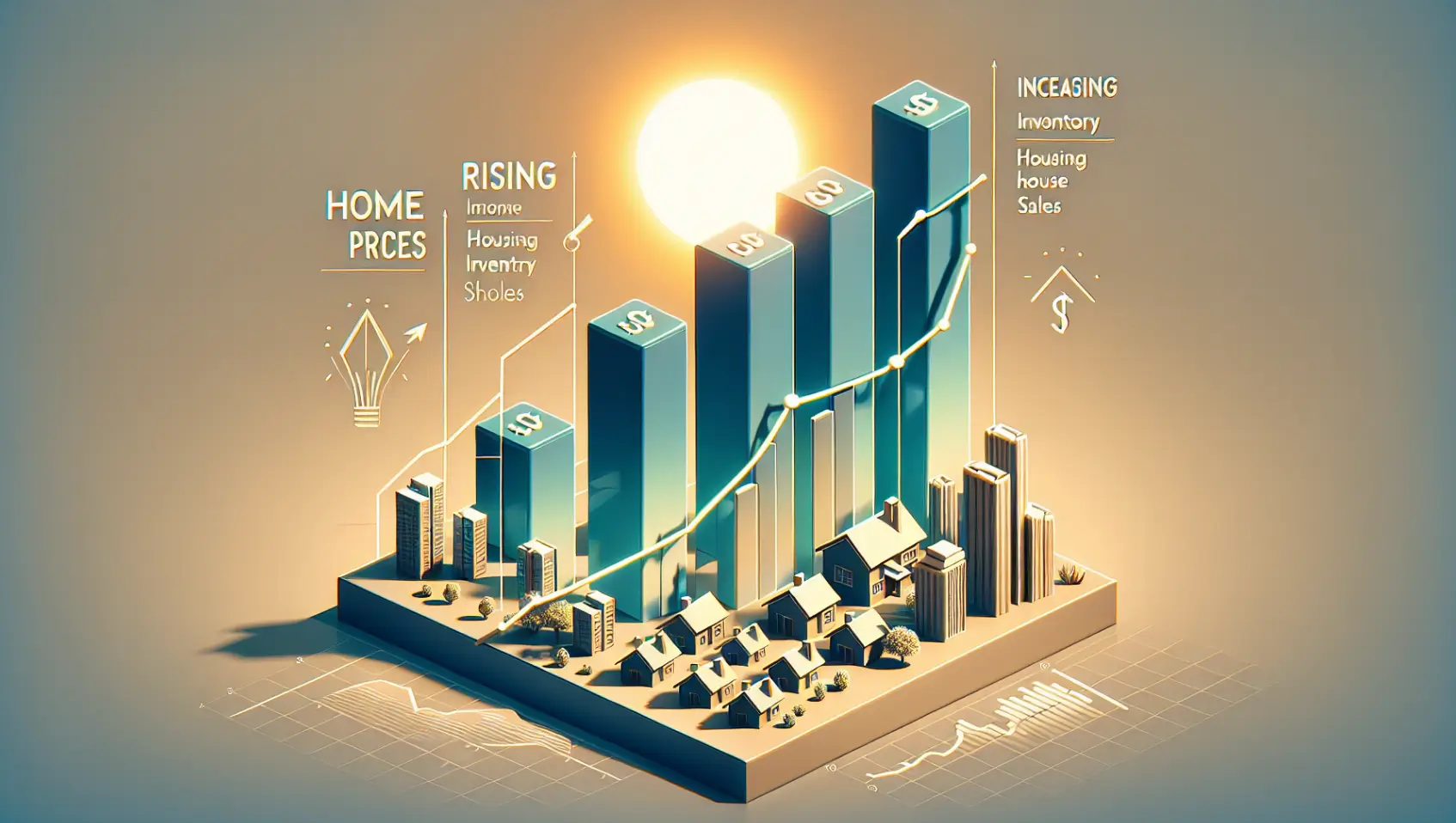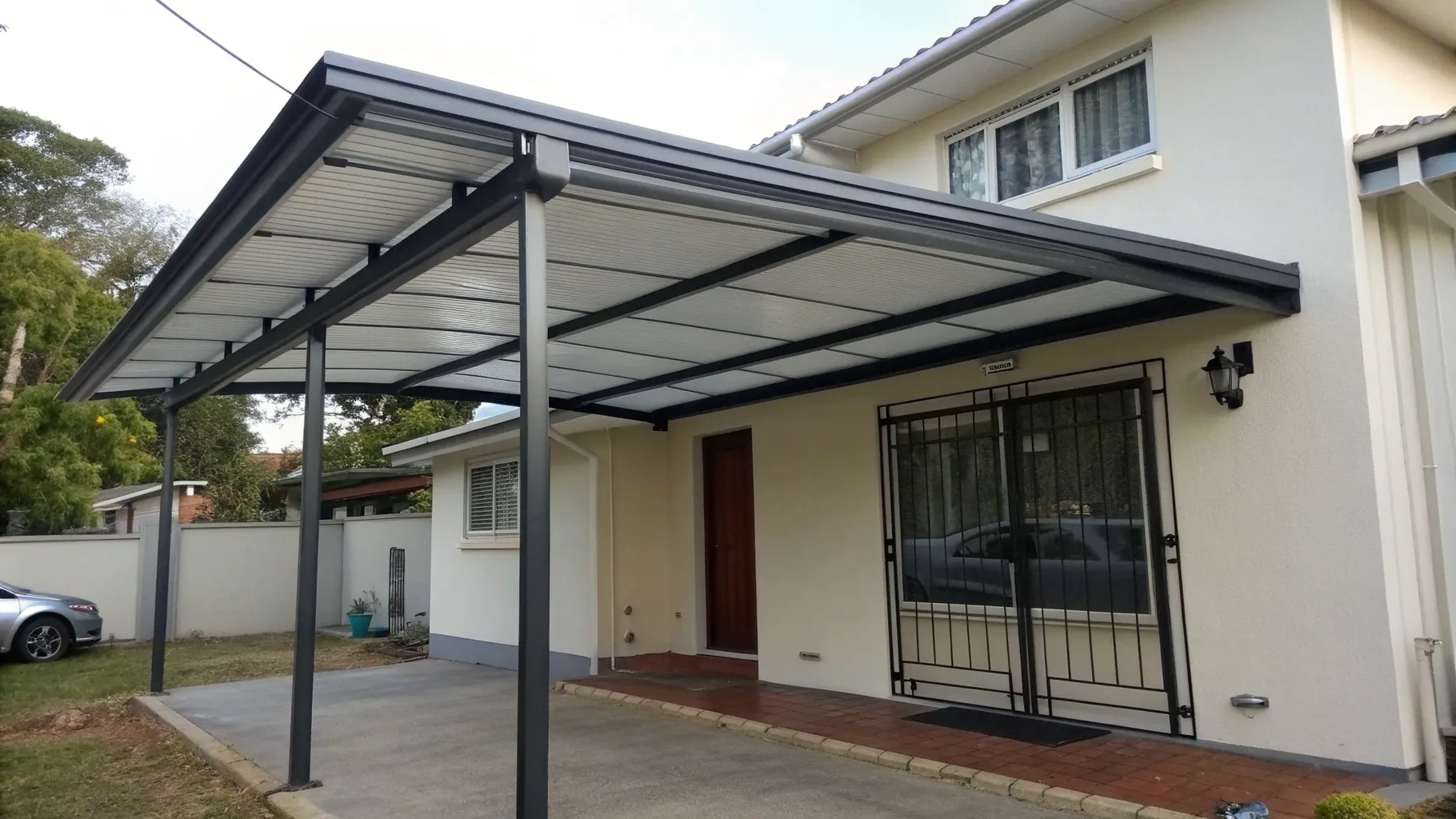
In this article, we explore the latest housing market forecast for Utah and the broader US real estate landscape through 2025. With insights from Fannie Mae's recent updates, we'll discuss trends in home sales, prices, and mortgage rates that impact prospective buyers and sellers alike.
Introduction to Fannie Mae's Housing Market Forecast
Fannie Mae recently released its housing market forecast through 2025, shedding light on key metrics such as housing starts, home sales, mortgage rates, and home prices. The forecast provides valuable insights for anyone interested in Utah Real Estate and the broader US market. According to the report, home prices experienced significant growth in the second quarter of this year, exceeding earlier expectations. However, this growth is expected to moderate soon.
Current Trends in Home Prices
Home prices have shown robust growth recently. In the second quarter, the increase was more pronounced compared to the same period last year. Despite this surge, the growth rate is expected to decelerate in the coming months. Fannie Mae projects home prices to rise by an annual rate of 6.1% in 2024, followed by a 3% increase in 2025. This trend suggests a steady, albeit slower, rise in home prices, which is crucial for those involved in Utah Real Estate.
Inventory Levels and Home Sales
Despite a significant increase in the number of homes listed for sale, home sales have been on a downward trend. Inventory levels have risen by over 30%, according to Realtor.com. This increase in listings has not translated into higher sales, as evidenced by the data from the National Association of Realtors (NAR).
In May, existing home sales were down by about 3% compared to the same period last year. The trend continued into June, with a more pronounced decrease of 5.4% year-over-year. This decline highlights the current challenges in the market, where increased inventory does not necessarily lead to higher sales.
The graphical data from NAR shows that existing home sales have been decreasing steadily since March. In contrast, inventory levels have been rising consistently, particularly from February through June. This mismatch between rising inventory and declining sales is a critical factor affecting the Utah Real Estate market and the broader US housing landscape.
Understanding the Demand-Supply Dynamics
The current housing market is characterized by a complex interplay between demand and supply. While inventory levels have increased, the demand for homes has not kept pace. This imbalance is evident in the declining sales figures despite more homes being available for sale.
Factors Contributing to Rising Inventory
- More homeowners are listing their properties, contributing to the increase in available homes.
- New listings have been rising steadily, adding to the overall inventory.
However, the demand side presents a different picture. Several factors are contributing to the softer demand:
Factors Affecting Home Sales
- Higher mortgage rates are making home loans less affordable for many buyers.
- Economic uncertainty is causing potential buyers to delay their purchase decisions.
This dynamic of increasing supply but decreasing demand is contributing to the rise in inventory levels. For those involved in Utah Real Estate, understanding this demand-supply relationship is crucial for making informed decisions. As inventory continues to rise, it may lead to more competitive pricing and opportunities for buyers, but it also poses challenges for sellers looking to close deals quickly.
Regional Variability in Housing Markets
Housing markets across the United States are experiencing significant regional variability. This is evident in the differing inventory levels and home prices across various regions. For instance, many large metros in the Sun Belt, including parts of Texas, Louisiana, and Florida, now have inventory levels that match or even exceed those of 2019.
Sun Belt vs. Northeast and Midwest
In the Sun Belt, the increase in inventory levels is contributing to a decrease in home prices. For example, Austin, Texas, has 41% more homes for sale compared to June 2019. Similarly, New Orleans and Punta Gorda, Florida, have seen inventory increases of 12% and 70%, respectively. This surplus in inventory is putting downward pressure on home prices in these areas.
In contrast, regions like the Northeast and parts of the Midwest are experiencing far lower inventory levels compared to 2019. In New Haven-Milford, Connecticut, inventory is down by a staggering 72%, and in New York, it is down by 51%. These lower inventory levels are supporting the growth rate in home prices in these regions.
California's Unique Position
California presents a mixed picture. While some regions like San Diego have seen a 43% decrease in inventory, leading to record-high home prices, other areas like the greater Sacramento area have also experienced a significant drop in inventory by about 34%. This decrease in available homes is helping to sustain high home prices in these parts of California.
Understanding these regional differences is crucial for anyone involved in Utah Real Estate. It highlights the importance of localized market conditions in shaping housing trends and provides valuable insights for buyers and sellers looking to navigate the market effectively.
Comparative Analysis of Inventory Levels
Analyzing inventory levels across different regions provides a clearer picture of the housing market dynamics. The contrast between areas with rising inventory and those with declining inventory levels is stark and has significant implications for home prices and sales.
Inventory Increases in the Sun Belt
- Austin, Texas: 41% more homes for sale compared to June 2019.
- New Orleans, Louisiana: 12% increase in inventory.
- Punta Gorda, Florida: 70% increase in inventory.
These increases in inventory levels are leading to a moderation in home prices. As more homes become available, buyers have more options, which reduces the upward pressure on prices.
Inventory Decreases in the Northeast and Midwest
- New Haven-Milford, Connecticut: 72% decrease in inventory.
- New York: 51% decrease in inventory.
- San Diego, California: 43% decrease in inventory.
In these regions, the significant decrease in inventory levels is contributing to higher home prices. With fewer homes available for sale, buyers face more competition, driving prices up.
Interestingly, some areas like Dallas, Texas, and Houston, Texas, have seen mixed trends. Dallas has a slight decrease in inventory by 6.5%, while Houston's inventory is down by nearly 15%. These variations underscore the complex and localized nature of housing markets.
For those involved in Utah Real Estate, understanding these comparative inventory levels is essential. It helps in making informed decisions about buying or selling properties and anticipating future market trends. As inventory levels continue to shift, keeping a close eye on these changes will be key to navigating the evolving housing landscape.
Explore Utah Real Estate

2098 E GOOSE RANCH RD, Vernal, UT
$103,000
274,864 sqft

2148 E GOOSE RANCH RD, Vernal, UT
$116,000
309,276 sqft

5618 E SOUTH FORK RD, Provo, UT
$43,000,000
6 10 22,958 sqft
Forecast for Housing Starts and New Home Sales
Fannie Mae's latest forecast indicates a downward revision for housing starts and new home sales due to rising inventory levels. This trend is especially noticeable in the Sun Belt regions, where there's a significant increase in new home construction. The abundance of land in these areas has led to more building activity, contributing to a surplus of new homes for sale.
Factors Influencing Housing Starts
- High inventory levels: With inventory at a five-year high, the need for new housing starts has decreased.
- Regional disparities: Areas with more land, like the Sun Belt, see more new construction compared to land-scarce regions like the Northeast.
As a result, housing starts are expected to decline, which also impacts new home sales. The forecast suggests that new home sales will face challenges due to the oversupply in certain markets.
Impact on New Home Sales
The forecast for new home sales has been revised downward. This is largely due to the high inventory levels, which create a competitive market where new homes must compete with a growing number of existing homes for sale. This trend is expected to continue through 2025, affecting builders and developers in the Utah Real Estate market and beyond.
Existing Home Sales Predictions
In contrast to new home sales, the forecast for existing home sales has been revised upward. This positive outlook is driven by several factors, including modestly lower mortgage rates and a steady increase in the supply of existing homes for sale.
Drivers of Existing Home Sales
- Lower mortgage rates: Modestly lower rates are making home loans more affordable, encouraging more buyers to enter the market.
- Rising inventory: The supply of existing homes for sale has been increasing, providing more options for buyers.
Doug Duncan, Fannie Mae's Senior Vice President and Chief Economist, highlights that the housing market is waiting for improved affordability even as the supply of homes rises. This gradual increase in inventory is expected to support a steady rise in existing home sales through 2025.
Trends in Existing Home Sales
Existing home sales have shown a consistent, albeit slow, increase over the past few months. For example, inventory levels for existing homes have been rising at a rate of around 34% to 38% year-over-year for the past two months. This steady pace suggests a balanced market where supply and demand are gradually aligning.
The data also reveals that inventory levels for existing homes are not skyrocketing but are instead increasing at a manageable rate. This trend is crucial for those involved in Utah Real Estate, as it indicates a stable market environment where buyers and sellers can make informed decisions.
Comparative Analysis
Comparing the inventory levels of new and existing homes provides further insights into the market dynamics. While new homes are at their highest inventory levels since 2008, the inventory of existing homes is rising more gradually. This difference underscores the unique challenges and opportunities in each segment of the housing market.
For the Utah Real Estate market, understanding these trends is essential. The forecast suggests that while new home sales may face headwinds due to high inventory, existing home sales are poised for steady growth. This balanced outlook offers a nuanced perspective for buyers, sellers, and investors navigating the housing market through 2025.
Expected Trends in Mortgage Rates
Mortgage rates have been on a roller coaster over the past year, fluctuating significantly. As of late July, the average 30-year fixed mortgage rate for those with excellent credit is around 6.8%, according to Mortgage News Daily. This is a notable decrease from the 8% rates seen in October. However, despite this decline, affordability remains a significant issue for many potential buyers.
Even though mortgage rates have fallen to a six-month low, the record-high home prices continue to pose a challenge. The affordability constraints are significant enough to prevent a substantial increase in home sales. This dynamic is crucial for anyone involved in the Utah Real Estate market, as it underscores the ongoing tension between mortgage rates and home prices.
Looking ahead, the forecast suggests that while mortgage rates may continue to fluctuate, they are unlikely to drop significantly enough to offset high home prices. This means that affordability will remain a key issue, influencing both the demand for homes and the overall market conditions.
For prospective buyers in Utah Real Estate, it's essential to stay informed about mortgage rate trends and consider how these rates, in conjunction with home prices, will impact their purchasing power. Sellers should also be aware of these trends, as they can influence buyer behavior and the overall market dynamics.
Long-term Home Price Growth Expectations
Fannie Mae's forecast projects that home price growth will decelerate but remain positive over the near term. This means that while prices will continue to rise, the rate of increase will slow down. This trend is expected to persist through 2024 and 2025, with home prices rising by an annual rate of 6.1% in 2024 and 3% in 2025.
It's important to note that these national trends can vary significantly by region. For instance, many Sun Belt metros are experiencing substantial increases in inventory due to new home construction. This influx of new homes is contributing to a moderation in home price growth in these areas. In contrast, the Northeast and Midwest regions are seeing much tighter supply, which supports stronger home price growth.
For those involved in Utah Real Estate, understanding these regional variations is crucial. Utah, with its unique market conditions, may experience different trends compared to the national average. The state's real estate market could see a steadier rise in home prices due to its specific demand-supply dynamics.
More Properties You Might Like

864 W SAPPHIRE SKY LN #546, St George, UT
$4,300,000
7 9 5,136 sqft

850 LAZY WAY #8, Francis, UT
$1,300,000
4 4 2,755 sqft

7665 STERLING DR, Park City, UT
$6,100,000
5 6 4,975 sqft
In summary, while the long-term outlook for home prices is positive, the growth rate is expected to slow. Buyers should be prepared for a more gradual increase in prices, and sellers should adjust their expectations accordingly. Staying informed about both national and regional trends will be key to navigating the Utah Real Estate market effectively.
Comparing Fannie Mae and Zillow Forecasts
Fannie Mae and Zillow have both released forecasts for the housing market through 2025, providing valuable insights for anyone involved in Utah Real Estate. While both forecasts have similarities, there are key differences worth noting.
Fannie Mae's Forecast
Fannie Mae's forecast for 2025 highlights a nuanced view of the housing market. They project a slight increase in existing home sales, with figures expected to rise from 4.1 million in 2024 to just over 4.5 million in 2025. This represents a modest recovery from the near three-decade low experienced in 2023.
For new home sales, Fannie Mae predicts a mixed outlook. They expect a 4% decline in 2023, but anticipate a significant rebound with a 12% increase in 2025 compared to 2024. This suggests a potential shift in market dynamics that could influence buyer behavior and inventory levels.
Home prices are another critical area where Fannie Mae offers insights. They forecast a 6.1% increase in 2024, followed by a 3% rise in 2025. This indicates a slowing but steady growth in home prices, aligning with historical norms.
Mortgage rates are also expected to fluctuate, with Fannie Mae predicting a peak at 7% in Q2 2023, gradually decreasing to 6.2% by the end of 2025. This trend is essential for buyers and sellers to consider as it impacts affordability and purchasing power.
Zillow's Forecast
Zillow's forecast presents a slightly different perspective. They anticipate 4.2 million existing home sales in 2024, closely aligning with Fannie Mae's prediction but slightly higher by about 32,000 sales. This small discrepancy could be due to rounding differences or slight variations in market assumptions.
When it comes to home values, Zillow is more conservative. They project a 2% increase in home prices for 2024, which is significantly lower than Fannie Mae's 6.1% forecast. This difference highlights varying expectations about market conditions and price growth.
Both forecasts agree on the overall trend of moderate growth in home prices and a gradual recovery in home sales. However, the differences in the magnitude of these changes underscore the importance of considering multiple perspectives when making real estate decisions.
Implications for Utah Real Estate
For those involved in Utah Real Estate, these forecasts offer valuable insights. The anticipated increase in existing home sales suggests a more active market, providing opportunities for both buyers and sellers. However, the slower growth in home prices means that while the market is recovering, it may not return to the rapid price increases seen in previous years.
Understanding these forecasts helps stakeholders make informed decisions. Buyers can anticipate a more favorable market with slightly lower mortgage rates and modestly rising prices. Sellers can prepare for a more competitive environment as inventory levels gradually increase.
Conclusion and Future Considerations
The housing market forecast for 2025 presents a complex but cautiously optimistic picture. Both Fannie Mae and Zillow agree on a gradual recovery in home sales and steady, albeit slower, growth in home prices. For those involved in Utah Real Estate, these trends offer a roadmap for navigating the market in the coming years.
Key Takeaways
- Existing home sales are expected to increase modestly, providing more opportunities for buyers and sellers.
- Home prices will continue to rise, but at a slower pace, aligning with historical growth rates.
- Mortgage rates are projected to decrease slightly, improving affordability for buyers.
- Regional variability will play a significant role, with some areas experiencing higher inventory levels and others facing tighter supply.
Future Considerations
As we look ahead, several factors will influence the housing market. Economic conditions, mortgage rate trends, and regional supply-demand dynamics will all play crucial roles. Staying informed about these variables will be essential for anyone involved in Utah Real Estate.
Buyers should monitor mortgage rates and home price trends to make well-timed purchasing decisions. Sellers should stay updated on inventory levels and market conditions to set competitive prices and attract buyers. Investors should consider regional variations and potential growth areas to maximize their returns.
In conclusion, the housing market forecast through 2025 offers a balanced outlook. While challenges remain, there are also opportunities for growth and recovery. By staying informed and adapting to changing market conditions, stakeholders can navigate the Utah Real Estate market effectively and make informed decisions for the future.
Related Articles:












